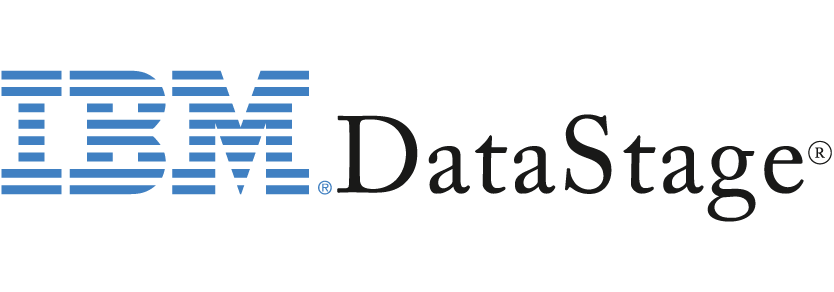Have you considered moving to PostgreSQL yet? Do you need to know what you should do?
If you need to lower your expenses, optimize speed, or avoid vendor lock-in, PostgreSQL offers excellent open-source database solutions. However, the whole conversion might appear scary. Luckily, there are necessary tools that can improve our lives.
In this blog, we’ll look at some of the best Postgres database migration tools. These tools can streamline the migration process, simplify data transfer, minimize downtime, and ensure data integrity.
Migrating your Postgres database? Let Hevo’s no-code platform handle the heavy lifting. Automate the entire process, ensure data integrity, and achieve a smooth, hassle-free migration with just a few clicks. Say goodbye to downtime and data loss! With Hevo:
- Easily migrate different data types like CSV, JSON etc.
- 150+ connectors like PostgreSQL and Google Sheets(including 60+ free sources).
- Eliminate the need of manual schema mapping with the auto-mapping feature.
Experience Hevo and see why 2000+ data professionals, including customers such as Thoughtspot, Postman, etc., rated us 4.3/5 on G2.
Try Hevo to migrate your PostgreSQL Data for freeTable of Contents
Why migrate to PostgreSQL?
Thinking about making the switch to PostgreSQL? Here’s why it might be the perfect choice for you and your business:
- Cost of Implementation: PostgreSQL is an open-source DBMS that is free to use, download, and distribute. By choosing PostgreSQL, you can save a ton on software costs and even reduce hardware expenses.
- Ease of Implementation: Implementing PostgreSQL is effortless thanks to its straightforward architecture and modular design. It has separate modules for functionalities like replication, backup, and high availability, allowing you to pick what’s relevant to your use case. This reduces complexity and makes it much easier to get up and running. Tools like pgAdmin offer a user-friendly interface that even beginners can navigate easily, so you don’t need specialized skills to manage your database.
- Scalability: PostgreSQL scales impressively well, handling up to 100,000 transactions per second (TPS) on a single server. This makes it a solid choice for large-scale applications that demand high throughput.
- Performance: You’ll love PostgreSQL’s performance, with its low latency and high throughput, ensuring your applications run smoothly and efficiently.
9 Best Postgres Database Migration Tools to Consider in 2025
1. Hevo Data
Hevo is a no-code data pipeline platform designed to make PostgreSQL migrations seamless, reliable, and fast. It empowers businesses to replicate data from 150+ sources, including databases, SaaS apps, and cloud platforms. With real-time replication, automated schema management, and advanced transformation capabilities, Hevo minimizes downtime and eliminates manual errors, ensuring your data stays accurate and consistent throughout the migration process.
Trusted by 2,000+ data professionals, Hevo combines speed, scalability, and simplicity, making it a top choice for teams aiming for a smooth transition to PostgreSQL.
Pros:
- Fully managed, cloud-native platform with automatic scaling and “zero maintenance” pipeline infrastructure
- No-code/low-code UI combined with advanced capabilities (drag-drop transforms, Python-based scripting, dbt integration).
- Built-in deduplication, schema-drift detection, retry logic, audit logs, and pipeline visibility dashboards.
- Enterprise-grade security & compliance: end-to-end encryption, regional data residency, SOC 2 Type II / HIPAA / GDPR support, private connectivity options.
Cons:
Because it emphasizes automation and ease-of-use, very niche or ultra-custom transformations may require additional manual workaround.
The cost profile may become significant for very high-volume migrations or long-term use.
2. pg_chameleon

pg_chameleon is a tool for quickly performing replication from MySQL into PostgreSQL. It was developed using Python 3.5+. It employs MySQL replication to capture row images of MySQL databases. The images are converted into a JSONB data structure. A pl/pgsql function decodes the JSONB, replaying your changes directly into your PostgreSQL database.
Pros:
- Excellent for replicating multiple MySQL schemas into PostgreSQL with minimal configuration.
- Performs low-lock migrations, reducing downtime during replication.
- Offers schema mapping flexibility and automated error handling for reliable data syncs.
Cons:
- Limited primarily to MySQL-to-PostgreSQL replication, so not ideal for diverse source systems.
Setup may feel complex for beginners, requiring some familiarity with MySQL binlogs and replication principles.l.
3. pgloader

pgloader is an open-source tool for migrating data from various sources into PostgreSQL. It supports migrations from MySQL, SQLite, and MS SQL, offering a powerful and flexible solution for your database migration needs. pgloader automates extracting data from the source database, transforming it as needed, and loading it into PostgreSQL.
Pros:
- Supports multiple source systems including MySQL, SQLite, and MS SQL.
- Uses PostgreSQL’s native COPY command for high-performance bulk loading.
- Enables flexible data transformations during migration, allowing schema conversion on the fly.
Cons:
- Best suited for one-time migrations, not ongoing or continuous replication.
Complex schema conversions may need manual verification and error correction.
4. ora2pg

Pros:
- Converts Oracle and MySQL schemas into PostgreSQL efficiently, supporting a wide range of data types and objects.
- Generates detailed migration reports for easier tracking.
- Completely open-source, making it ideal for budget-conscious projects.
Cons:
- Handling complex PL/SQL code and triggers still requires manual intervention.
Setup involves installing Perl modules and client tools, which can add configuration overhead.
5. IBM InfoSphere DataStage

IBM InfoSphere DataStage is a robust data integration tool designed to handle the complexities of migrating and transforming data between various sources and PostgreSQL databases. It supports high data volumes and provides extensive capabilities for data extraction, transformation, and loading (ETL).
Pros:
- Enterprise-grade ETL platform with extensive transformation, cleansing, and governance capabilities.
- Optimized for large-scale, high-volume data migrations with parallel processing.
- Offers strong data quality management and integration with other IBM tools.
Cons:
- Interface and development workflows may feel dated compared to newer cloud-native ETL tools.
- Licensing costs and resource requirements can be high for small to mid-sized teams.
6. Fivetran
Fivetran is a managed data pipeline service that helps automate the process of extracting, transforming, and loading (ETL) data from various sources into PostgreSQL. Known for its simplicity and reliability, Fivetran enables seamless data integration without manual coding or maintenance.
Pros:
- One of the widest connector libraries in the market (700+), covering major SaaS and cloud platforms.
- Handles schema drift automatically, maintaining data consistency with minimal manual effort.
- Ideal for teams that want a “set and forget” approach to data replication.
Cons:
- Consumption-based pricing (based on active rows) can escalate quickly for high-volume pipelines.
Limited scope for advanced transformations — focuses more on extraction and loading than heavy transformation.
7. Blendo

Blendo is a data integration platform that simplifies moving data from multiple sources into PostgreSQL. With its user-friendly interface and automated workflows, Blendo makes it easy to set up and manage data pipelines without extensive technical knowledge.
Pros:
- Designed for analytics teams, offering simple integration of marketing and SaaS data into PostgreSQL.
- Quick setup with minimal engineering dependency.
- Offers automated data normalization for ready-to-analyze outputs.
Cons:
- Limited connectors compared to full-scale ETL solutions.
Transformation depth may be insufficient for complex engineering use cases requirements. A 14-day free trial is available to help you assess the platform’s capabilities.
8. Stitch

Stitch is a simple, powerful ETL service that enables you to move data from various sources into PostgreSQL seamlessly. With its easy-to-use interface and robust feature set, Stitch simplifies the data integration process, making it accessible for users of all technical levels.
Pros:
- Extremely easy to use and quick to set up, great for small to mid-sized teams.
- Provides incremental data loading and automated schema detection.
- Offers transparent pricing with a free tier for light usage.
Cons:
- Doesn’t support real-time replication; latency may affect time-sensitive use cases.
Lacks advanced transformation and orchestration capabilities for larger data teams.o help you test the features, they also provide a 14-day free trial for their paid plans.
9. dbForge Studio for PostgreSQL by Devart

The dgForge Studio for PostgreSQL Migration Tool is your go-to solution for quickly and easily relocating your workloads and data to new storage and processing systems. It features an intuitive GUI packed with advanced options, making data migration a breeze. PostgreSQL database migration involves moving your data from a source database to a target one. With a quick and seamless process, you can quickly transfer your PostgreSQL data between servers, databases, and IDEs.
Pros:
- Rich GUI environment for managing PostgreSQL databases, with tools for schema comparison, query profiling, and data export/import.
- Ideal for developers and DBAs who prefer a visual interface over command-line tools.
Cons:
- Primarily available for Windows, which may limit adoption in Linux-based environments.
- Not a full-fledged migration or ETL tool, mainly suited for database management tasks.
What Makes These Postgres Database Migration Tools Different From Each Other?
| Tool | Features | Pricing |
| Hevo Data | -Multiple Connectors -No-code platform -Advanced data transformation -Automated schema management -Security | Free and Paid Plan |
| pg_chameleon | -Compatibility -Error Handling -Schema Management -Data Consistency | Free Plan |
| pgloader | -Multiple Sources -Advanced Transformation -Command-line interface -Performance -Continuous Migration | Free Plan |
| ora2pg | -Schema Management -Type of Data Transferred -Auto Conversion -Detailed Reporting | Free Plan |
| IBM DataStage | -Data Sources -Data Transformation -Performance -Data Integration -Transparency | Paid Plan |
| Fivetran | -Multiple Sources -Schema Management -Data Transformation -Near Real-time data replication -User-friendly interface | Paid Plan |
| Blendo | -Multiple Sources -Auto Data Transformation -Real-time data replication -Data Quality | Paid Plan |
| Stitch | -Multiple Sources -Schema Management -User-friendly interface -Logical Replication -Data Scheduling | Paid Plan |
| dbForge Studio | -Export Templates -Negligible coding -Data Mapping -Explore databases | Paid Plan |
Key Factors to Consider When Choosing a Postgres Database Migration Tool
When selecting a Postgres database migration tool, it’s important to evaluate your options rightly. The correct ETL tool can save time, reduce errors, and ensure smooth migration. Here are the top five factors to consider:
1. Source and Destination Compatibility
Ensure the migration tool supports all your source databases (e.g., MySQL, Oracle) and target systems (e.g., PostgreSQL, cloud platforms). Tools that accommodate multiple sources can simplify migrations and future-proof your pipeline. Compatibility ensures fewer workarounds and reduces the risk of data loss.
2. Data Transformation and Schema Handling
Migrations often require data transformation, mapping, and schema adaptation. Evaluate how the tool handles schema evolution, type conversions, and complex transformations. Automation features such as schema drift detection or auto-mapping can reduce manual effort and minimize errors.
3. Reliability and Data Integrity
Ensuring complete and accurate migration is critical. Look for tools with built-in validation, error handling, logging, and retry mechanisms. Tools with real-time monitoring or rollback capabilities provide confidence that your data remains consistent throughout the migration process.
4. Performance and Scalability
Consider how well the tool performs with large datasets or high transaction volumes. Parallel processing, batch handling, and minimal downtime during migration are key performance indicators. A scalable solution ensures that migrations can grow with your business without compromising speed.
5. Ease of Use and Support
The learning curve, user interface, and level of support are crucial for smooth adoption. No-code or low-code platforms can empower non-technical users, while strong vendor support, tutorials, and documentation accelerate troubleshooting and reduce dependency on specialized engineers.
Conclusion
Changing to Postgres can take your business to the next level, and utilizing the correct tools can make the transition easier and less stressful for you. Our blog contains a list of preferred postgresql migration tools to consider, with examples including pg_chameleon and Ora2Pg, among others, for the open-source method and Hevo Data or dbForage, perfect examples for the commercial one.
Before selecting a migration tool, consider the complexity of your data, the size of your migration, and the cost you can incur. We discussed open-source and commercial Postgres database migration tools that require payment but have more guarantees.
Read in-depth about Data Migration Tools
Schedule a demo with us to experience a seamless data migration to Postgres.
FAQs
1. What is PostgreSQL?
PostgreSQL is a database system capable of object-relational handling; it is free of charge and open source. PostgreSQL has earned a reputation for its solid architecture, interoperability with other applications through SQL standards adherence, high degree of usefulness regarding data integrity, and a rich feature set.
2. What steps should you take to migrate to PostgreSQL?
Using Hevo Data, you can do this in 2 simple steps:
1. Set up your Source by configuring it with your credentials.
2. Configure your PostgreSQL database as the Destination.
3. What is the best way to transfer the data in PostgreSQL?
One efficient way to transfer data between two PostgreSQL databases hosted on Hevo Data is to use the built-in replication features, such as Logical or Streaming Replication. Set up replication between the source and destination databases, ensuring real-time or selective data transfer based on your requirements.
4. What is the best way to migrate a PostgreSQL database?
You can use the manual method, which uses tools like pg_dump to export data from the source database and pg_restore to import data into the target database. However, to avoid the hassle and complexity of the manual steps, you can use tools like Hevo Data, which can simplify the process without worrying.












